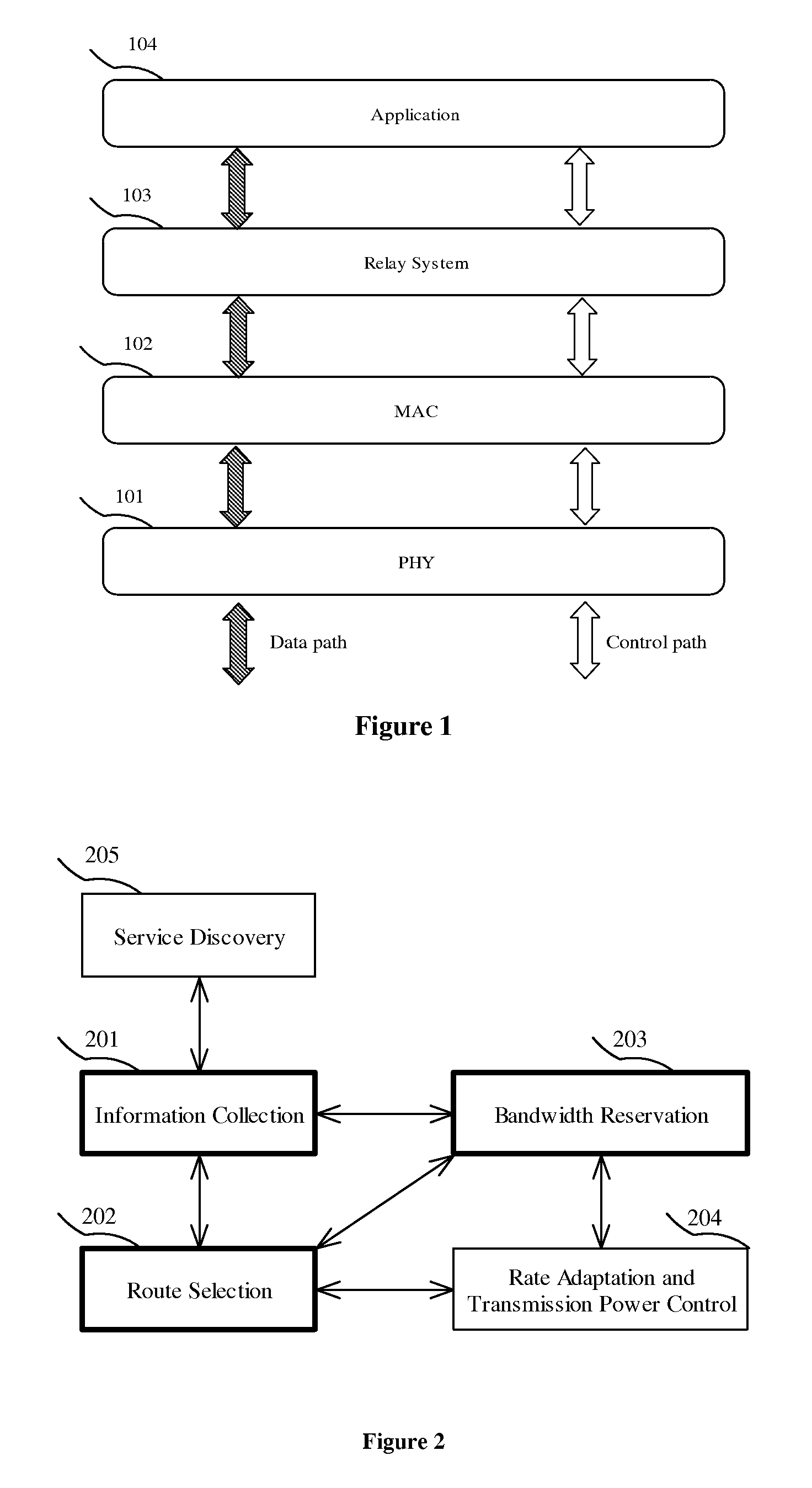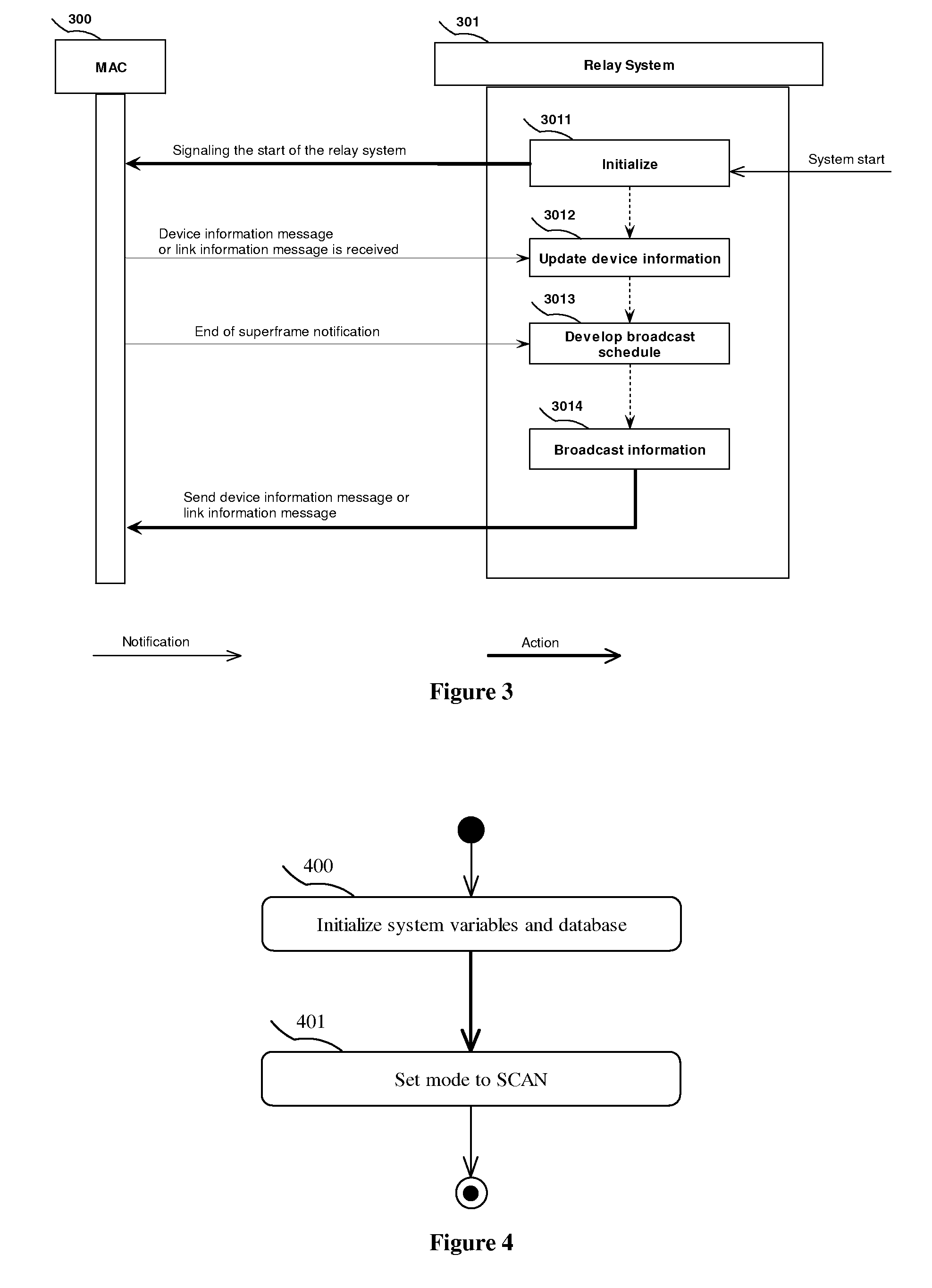Method and Device for Data Routing and Bandwidth Reservation in Small Scale Distributed Networks
a distributed network and data routing technology, applied in the field of wireless communication in distributed networks, can solve the problems of network limiting and unique characteristics, network is susceptible to interference, and uwb technology has some drawbacks, so as to reduce communication overhead
- Summary
- Abstract
- Description
- Claims
- Application Information
AI Technical Summary
Benefits of technology
Problems solved by technology
Method used
Image
Examples
Embodiment Construction
[0026]In a multi-hop communication scenario not all members of the network are in direct communication range with every other member in the network. In the following description the term neighbor is used to donate those members of the network that are in direct communication. That is to say, the neighbors of a device A are those other devices with which device A can communicate directly.
[0027]Reference will now be made in detail to an exemplary embodiment of the present invention as practiced in a Time Division Multiple Access (TDMA) based MAC protocol in which every device in the network sends out ‘hello’ messages, by means of beacon frames, to announce its existence and provide other supplementary information in every superframe. The protocol stack for the exemplary embodiment is shown in FIG. 1. A relay system according to the invention 103 is built on top of the MAC layer 102. It utilizes services provided by MAC 102 and PHY 101, and provides end-to-end data transmission service...
PUM
 Login to View More
Login to View More Abstract
Description
Claims
Application Information
 Login to View More
Login to View More - R&D
- Intellectual Property
- Life Sciences
- Materials
- Tech Scout
- Unparalleled Data Quality
- Higher Quality Content
- 60% Fewer Hallucinations
Browse by: Latest US Patents, China's latest patents, Technical Efficacy Thesaurus, Application Domain, Technology Topic, Popular Technical Reports.
© 2025 PatSnap. All rights reserved.Legal|Privacy policy|Modern Slavery Act Transparency Statement|Sitemap|About US| Contact US: help@patsnap.com



